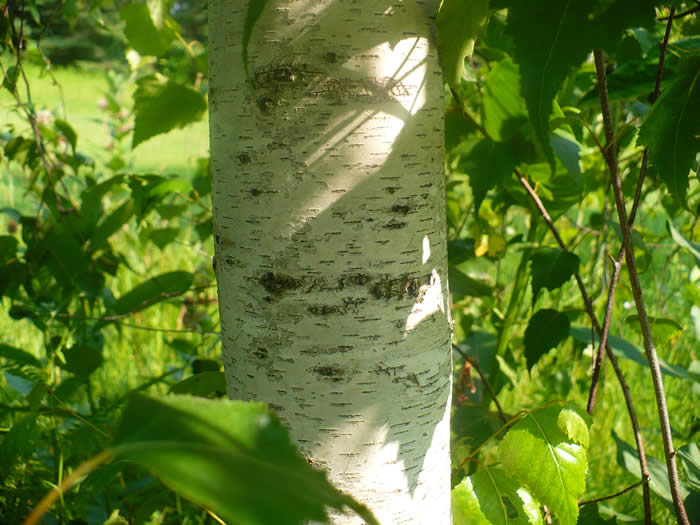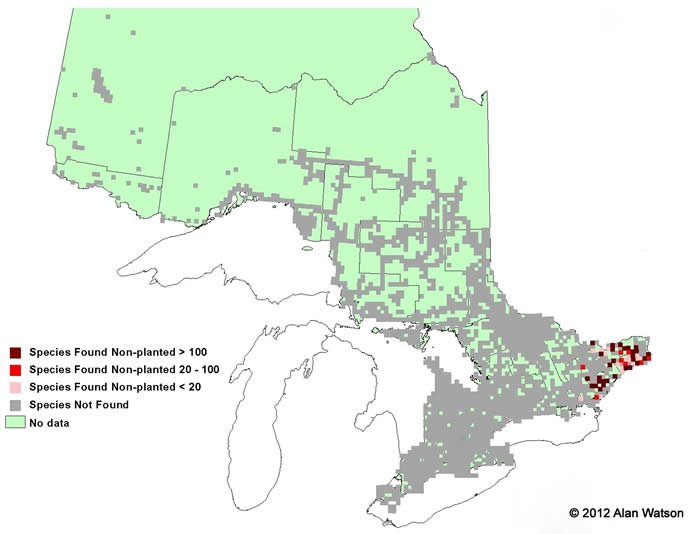grey birch
grey birch - Betula populifolia
The grey (or gray, either is fine!) birch only grows to about 12m and can live around 50 years. This pioneer species loves to colonize open, dry soils, including those created by human disturbances. The specific name populifolia means ‘with poplar-like leaves’. Grey birch leaves are similarly shaped to some poplars, and will tremble in the smallest breeze. Small mammals and birds love the seeds and catkins of the grey birch, which form in the fall and mature the following spring.

Grey birch trees often have distinct black patches underneath their branches, due to the fungus Pseudospropes longipilus. Photo by Chris Earley.

These unique birch leaves are triangular with a long, distinctly pointed tip and coarse, doubly serrate edges. These triangular leaves measure 4-7 cm long and are shiny green on both sides. Photo by Chris Earley.

The pollen catkins of the grey birch are usually found in isolation and measure around 2 cm in the winter and can grow up to 10 cm during pollination.

These buds are pointed and semi-uniform, usually hairy and exhibiting a light brown-grey colour. Photo by Sean Fox.

Ontario Tree Atlas map of non-planted Gray Birch. 1995-1999.
References
Farrar, J.L.. 1995. Trees in Canada. Fitzhenry & Whiteside Ltd. Toronto. ON. 504 pp.
Kershaw, L. 2001. Trees in Ontario: Including tall shrubs. Lone Pine Publishing. Edmonton. AB. 240 pp
Muma, W. 2011. Ontario Trees and Shrubs. [Online] Available: www.ontariotrees.com
OMNR, 2011. Ontario Ministry of Natural Resources: Ontario Tree Atlas. [Online] Available: http://www.mnr.gov.on.ca/en/Business/ClimateChange/2ColumnSubPage/267027.html
OMNR, 2008. Ontario’s Biodiversity: Species at Risk.